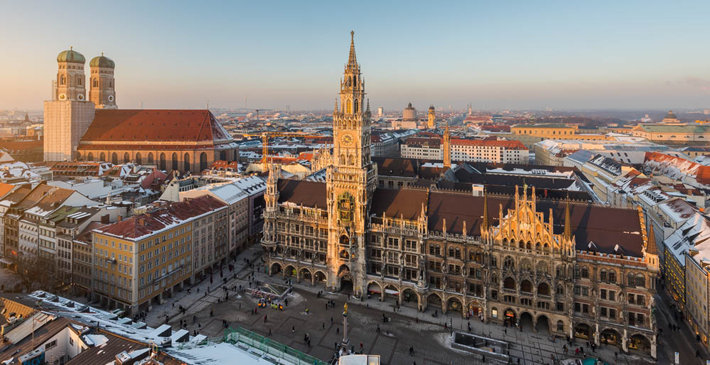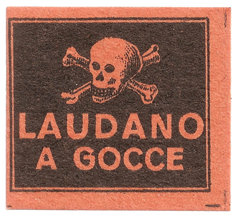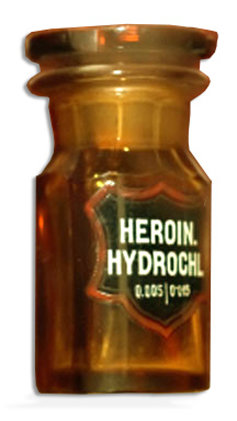Germany Drug Addiction and Treatment

With Germany’s history of beer brewing and pharmaceutical drug manufacturing, perhaps its current problems with substance abuse and addiction should come as no surprise. Germans came comparatively early to both trades, starting beer production around 800 B.C.E. and developing some of our most addictive pharmaceutical substances in the nineteenth and twentieth centuries.
Germany’s History as a Pharmaceutical Pioneer

Germany’s contributions to the illicit drug trade began when German scientists began to search for a cure for opium addiction. Opium use originated as far back as Egyptian times and use in Western cultures became widespread in the 1800s. A liquid preparation of opium called laudanum addicted tens of thousands of people in Europe and America, and there was no cure. Seeking a remedy, Friedrich Serturner extracted morphine from opium and began to market it as an analgesic and treatment for opium and alcohol addiction. Of course, it later was found that morphine itself was addictive.

In 1895, the German pharmaceutical manufacturer Bayer announced that it had developed heroin, a substitute for morphine that did not have morphine’s addictive qualities. It was marketed as a treatment for morphine addiction until it was discovered that when heroin breaks down in the body, it becomes morphine.
The tradition continued in the twentieth century. In 1916, the original oxycodone formulation, the essential component in the highly addictive prescription painkiller Oxycontin, was developed by Freunds and Speyer at the University of Frankfurt.
And finally, in 1939, IG Farben announced the development of methadone, a drug that would solve Germany’s opium shortage. While methadone is used in substitution drug addiction treatment, it is also a very common drug of abuse for many addicts.
Perhaps it is no surprise, then, that a recent report on drug addiction in Germany stated that as many as 2.8 million Germans over the age of 60 misuse or abuse their prescription medications. It’s estimated that two-thirds of those abusing prescription medications are women.
German Authorities Concerned About High Alcohol Consumption
German public health officials have recently brought attention to the stable but high levels of alcohol consumption among Germans. In 2008, the average German drank 9.9 liters of pure alcohol. What was cause for particular concern was that the number of those drinking to the point of unconsciousness doubled between 2000 and 2008. In 2008, 109,000 people were taken to medical facilities with extreme alcohol intoxication.
At the same time, more than 1.5 million Germans were classified as alcohol-dependent. One in five of these “regular consumers of alcohol” were between 12 and 25 years of age. In 2005, there were more than 40,000 alcohol-related deaths.
The connection between alcohol consumption and violent crime was also mentioned, with one in three violent crimes being committed under the influence of alcohol, mostly by men.
Instead of incarceration, some of those arrested for drug offenses are being sent to drug treatment facilities where they undergo a drug recovery program lasting as long as nine months. With the opportunity to participate in drug rehabilitation rather than going to jail, those in substance abuse treatment are able to re-integrate into society rather than becoming outcasts and confirmed addicts.
Heroin Now Coming From Asia, Cocaine from South America
While heroin had its origins within Germany, most of the country’s current supply of heroin makes the long trek from Afghanistan. The most common route to Europe is through Iran or Pakistan and then through Turkey and Bulgaria. Much of the heroin passing through Bulgaria is destined for Germany or Croatia. Heroin seizures along this route have been rising steadily since 2001, climbing from 38 metric tonnes to 115 mt. In the 2009 Annual World Drug Report, the United Nations pointed out that heroin seizures within Germany had increased 22 percent over the prior year.
Once heroin arrives in Germany, much is distributed to other European countries or is transshipped to the Netherlands, another major European distribution point.
Germany’s cocaine supply usually comes from South America, either by air or sea freight, or by way of shipments routed through Western African countries that possess little power to stem the tide.
A report issued in 2005 found that many more Germans were abusing cocaine than were previously thought. Tests were run on the wastewater from the Rhine River basin near Dusseldorf to detect the levels of chemicals that result from the body’s breakdown of cocaine. While it was previously estimated that perhaps 400,000 Germans were abusing cocaine each year, the quantity of leftover cocaine-metabolism chemicals in the wastewater painted an entirely different picture.
The tests showed that 30 kilograms of cocaine per day had to be consumed in the Rhine River basin, or 11 tons per year. Working with the number of people living in this basin and the average purity of German cocaine, each cocaine user (based on the figure of 400,000 users nationally) would have to snort 16 lines of coke per day. A researcher from the Munich Institute for Therapy Research stated that if this research was correct, “then the real number of cocaine users is dramatically higher than previously thought.”
 ®
®